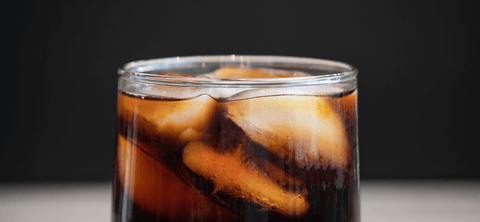Join us for a drink with the Toddy team, a proud partner of Standart Issue 26.
Are iced coffee and cold brew exactly the same?
The terms ‘iced coffee’ and ‘cold brew’ are not synonymous. The former describes a way in which coffee can be served, while the latter refers to a method of brewing it (i.e. without heat).
Iced coffee is made by brewing hot, strong coffee over ice (which will melt, thereby diluting the coffee) or by pouring cold-brewed coffee over ice. Cold brew, however, is prepared by extracting the coffee in room-temperature or cool water, with the process driven by time - rather than heat. This typically takes anywhere from eight to 24 hours. The resulting drink can be served hot, by steaming or diluting concentrated cold brew with hot water, or cold, with or without ice.
'There is strong demand for an energizing, naturally sweet beverage that’s dairy- and sugar-free and low in calories.'
Brewing temperature can impact the flavour profiles that coffee expresses. Cold-brewed coffee is frequently associated with a smooth, naturally sweet flavour, and less bitterness than coffee brewed with heat.
You can prepare iced coffee with either cold-brewed or traditional, hot-brewed coffee, and you can serve cold brew over ice (or hot), so while you can make iced coffee via the cold-brew method, it’s technically not the same as cold brew.
It seems that cafés prefer to serve stronger cold brews. What drives this preference?
Cafés tend to appreciate consistency and operational efficiencies. It’s possible to make cold brew of various strengths, including concentrates and ready-to-drink, but given the benefits of scaling up recipes to brew large batches, and that cold-brew concentrate generally offers a consistent flavour profile with each batch, that’s what cafés go for. Regular customers usually favour predictable beverages.
In addition, stronger cold-brew concentrates help to keep the coffee flavour at the forefront in drinks that can include milk, cream, non-dairy alternatives, and sweeteners. Although many connoisseurs drink cold brew year-round, it is particularly popular during warmer months, when they’re often enjoyed over ice. The flavourful concentrate helps to retain the coffee flavour even when the ice starts to melt. Also notable is the ease with which you can integrate a cold-brew concentrate in place of espresso to create quick-to-serve lattes and blended beverages that pair well with the heat of summer.

Why is nitro cold-brew coffee so popular?
‘Nitro’ is cold-brew coffee infused with nitrogen gas—a process that creates a velvety mouthfeel and mesmerizing cascade of gaseous bubbles, similar to Guinness beer. Although the price point of nitro tends to be a little higher than still cold-brew options, there is strong demand for an energizing, naturally sweet beverage that’s dairy- and sugar-free and low in calories. Add in the speed at which it can be poured and served, and it’s not difficult to see why cafés and restaurants have embraced the nitro trend.
This interview was published in partnership with Toddy. Learn more about making great cold brew on their website.



